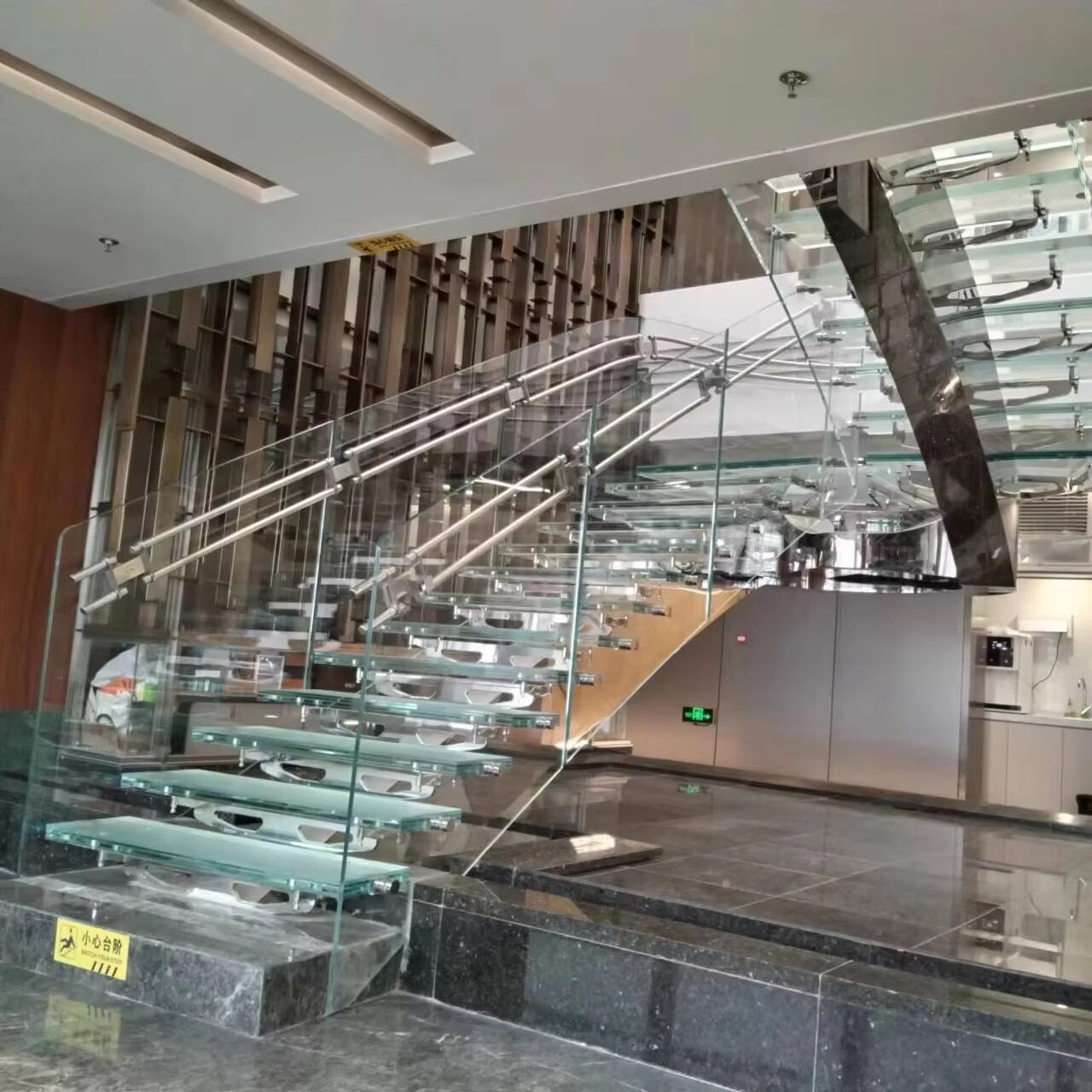Enhancing Aesthetic Versatility with Decorative Glass
Custom Textures and Patterns for Modern Designs
Custom textures and patterns applied to glass surfaces have become a big hit in today's design world, letting spaces feel truly personalized with their own special look. When architects incorporate things like sandblasted, etched, or patterned glass into buildings, they actually get to play around with how light moves through a space, creating some pretty stunning effects. People love these textured surfaces because they fit right into what's trending now in interior design - everyone wants something original that stands out visually. Take for example those etched glass walls we've seen popping up in offices lately. They do a great job at softening harsh lighting conditions while still keeping private areas just that way. One particular project comes to mind where designers worked closely with glass specialists to develop custom etched partitions for a new headquarters building. The result was amazing both aesthetically and functionally. Glass with decorative elements continues to shape modern architecture simply because it offers so many options for creativity without sacrificing practical needs.
Integrating Artistic Elements in Architectural Spaces
Decorative glass does much more than look good. It actually plays a key role in architectural design when it creates those eye-catching focal points people remember. When architects incorporate stained or colored glass into their designs, they're not just making things pretty but also adding something culturally meaningful to the space. Working with skilled artists and designers leads to some really special glass installations that can represent company values or tell stories about local culture. Take a clothing store chain that recently installed stained glass windows featuring leaf patterns across all their locations to show their dedication to eco-friendly practices. Many architects talk about how artistic glass changes the whole vibe of a building. They point to famous projects where these glass elements made a real difference in how people experience the space. Real architects who've worked on these projects will tell anyone that incorporating artistic glass makes buildings stand out visually and creates environments that people actually connect with. This kind of integration shows how art and function can work together beautifully in modern architecture.
Maximizing Natural Light and Spatial Perception
Optimizing Daylight Distribution with Translucent Finishes
Translucent glass does wonders for spreading out natural light throughout a space, cutting down on harsh glare while still letting plenty of illumination into rooms. What makes this type of glass so special is how it manages to give good visibility without compromising privacy, which explains why it works great in everything from family homes to office complexes. When architects incorporate these semi-transparent materials into their designs, they're able to craft spaces that maintain openness but also offer some level of seclusion where needed. Research points to something interesting about sunlight exposure at work places. People who get enough daylight during their day tend to be happier overall and experience lower stress levels compared to those stuck under artificial lights all day long. That's probably why smart designers always think about how light moves through a building before finalizing any plans for new construction projects.
Creating Visual Continuity in Open-Concept Layouts
Open concept spaces benefit greatly from decorative glass features that help people perceive space differently and maintain visual connections throughout the area. When designers install glass walls or sliding door systems, they create what feels like fewer physical barriers while still keeping distinct zones separate enough for practical purposes in workplaces where collaboration matters most. The result? Rooms appear bigger than they actually are, with smooth transitions from one section to another. Many interior specialists point out how adaptable these glass components really are, working just as well in home settings as they do in business environments. Take office partitions made of glass for instance – they clearly define workstations but don't block views across departments, fostering better interaction among staff members. Incorporating these kinds of glass elements into contemporary open floor plans definitely improves how functional and attractive those spaces ultimately become.

Sustainability Through Energy-Efficient Decorative Glass
Low-E Coatings and Thermal Insulation Benefits
Low E coatings, which stand for low emissivity, really help improve how energy efficient buildings are. Basically, what these coatings do is reflect infrared light back out, so they cut down on heat moving through the glass while still letting visible light come through normally. Some research shows that switching to Low E glass can cut energy usage around 30% when compared with regular glass. Building owners and managers looking to go green find this kind of insulation particularly valuable since it helps them slash both their carbon emissions and monthly bills. Installing Low E coatings makes sense for anyone wanting their structures to be more energy efficient and fits right into today's push for environmentally friendly building practices across the industry.
Recycled Material Integration in Glass Production
Adding recycled materials to glass production helps move the needle on environmental sustainability. When manufacturers incorporate recycled content, they save money on energy bills and reduce their need for virgin raw materials. The process cuts down on carbon emissions compared to making glass from scratch. We're seeing this happen across the industry too. Major glass producers have ramped up their use of post-consumer recycled glass in recent years, showing real commitment to greener practices. Consumers who care about the environment notice these changes, and companies are also responding to stricter regulations around sustainable manufacturing. The result? Lower costs for businesses and better protection for our planet at the same time.
Functional Privacy Solutions with Innovative Glass Techniques
Frosted and Acid-Etched Glass Applications
Frosted glass and acid etched options work really well when people want privacy but still need natural light coming through. That's why they're so popular in homes and businesses alike. The way these glasses let light pass through while keeping things blurry makes all the difference in places where privacy matters most bathroom walls, meeting rooms, even those office dividers between desks. Commercial buildings often go for acid etched glass because it gives privacy without completely blocking views. Frosted tends to be the choice when someone wants something that looks nice too since it has this gentle, elegant appearance. Architects and interior designers will tell anyone who asks that picking between these options depends heavily on what exactly needs to stay private and how important looks are to the overall space. Take kitchens for example frosted works great there with its soft lighting effect. But if a company wants something unique or decorative, acid etched offers lots of customization possibilities from different textures to intricate designs that actually double as art pieces while still doing their job of maintaining privacy.
Switchable Smart Glass for Dynamic Space Adaptation
Smart glass technology lets people control how transparent their windows are just by pressing a button. What makes this tech so cool? Well, it can switch between completely see-through and totally opaque whenever needed. This gives folks privacy when they want it while still letting in natural light most of the time. The best part? Buildings with smart glass need less artificial lighting during the day and don't require as much air conditioning either. Studies show these features can cut energy bills by around 30% over regular glass. We're starting to see this tech everywhere now. Office buildings are using it to create flexible workspaces where employees can adjust lighting based on what they're doing. Homeowners love it too because they get privacy without feeling closed off from the outside world. Some luxury apartments even have entire walls that go from transparent to foggy at will, completely changing the look and feel of a room within seconds.
Architectural Applications in Commercial and Residential Projects
Decorative Facades and Brand Identity Enhancement
Glass facades are pretty much essential for modern commercial buildings when it comes to boosting corporate branding. Think about it these days - companies want their offices or headquarters to stand out, right? That's why we see so many buildings with glass fronts that double as giant billboards for the brand. Some go all out with laminated glass featuring big printed logos, while others opt for tinted or colored glass that matches their brand palette. This stuff really makes a difference in how distinctive a building looks and how well it functions too. Architects and branding experts keep talking about how smart it is to combine looks with practicality. They point to real world examples where businesses have successfully used glass elements to make their mark. Sure, there are costs involved, but most companies find that having a strong visual identity pays off in terms of customer recognition and overall presence in the business community.
Elevating Interior Spaces with Glass Partitions and Features
Glass partitions are changing how we think about interior space planning, striking that sweet spot between keeping things open and still getting some privacy when needed. Architects and designers love them because they can totally transform a room without closing it off completely. The beauty lies in all the different ways people use glass these days – from those sleek sliding doors that disappear into walls to creative room separators with interesting textures or colors built right in. We're seeing more and more glass incorporated into buildings across the country lately. Why? Well, businesses want their offices to look bigger than they actually are, and homeowners crave that bright, airy feel without sacrificing function. Glass just works so well for creating those modern open plans everyone seems to be going crazy about nowadays.
Future Trends in Decorative Glass Technology
Digital Printing and Customizable Design Innovations
Digital printing tech is changing the game when it comes to decorative glass work, making custom designs much easier to pull off than before. With this new approach, designers can actually print intricate graphics, detailed patterns, and vibrant colors right onto glass without all the limitations that came with old school etching or stained glass techniques. What does this mean in practice? Well, architects and interior designers have way more freedom now. Buildings can showcase truly unique looks that match company branding or fit the character of whatever space they're decorating. Some high end hotels even use these printed glasses as statement pieces that tell stories about local culture or history.
Digital printing is changing how we personalize things in architecture, and this trend looks set to take off big time. The flexibility it brings works well for both looks and practicality, cutting down on complicated designs and saving precious time during projects. Industry folks are seeing something interesting happening too. They talk about rising interest in decorative glass that can be customized exactly how someone wants it. Architects these days want to blend artistic touches right into building components that actually serve a purpose. So now even ordinary glass panels become canvases where creativity meets real world function, turning walls and windows into statements rather than just structural elements.
Integration with IoT-Enabled Building Systems
When decorative glass meets IoT tech, buildings start becoming smarter and reacting faster to what's going on around them. This mix gives structures the ability to adjust themselves based on outside factors. Energy savings go up, security gets better, and people inside actually feel more comfortable. Putting sensors right into the glass itself means these smart buildings can send live information straight to their management systems. That lets managers tweak things like heat levels and lights exactly when needed. Some offices already have this setup and report noticeable differences in both costs and employee satisfaction.
Decorative glass equipped with IoT technology brings some pretty impressive advantages to the table. One major plus is the energy savings it delivers by making better use of natural light inside buildings, which cuts down on the need for electric lights during the day. Some installations have reported cutting lighting costs by nearly half just from this feature alone. Security gets a boost too thanks to built-in sensors that notify building staff when something seems off track or if someone tries to get in where they shouldn't. Take the new headquarters for GreenTech Solutions as an example they installed these smart glass panels throughout their offices. Not only do they look amazing, but they also adjust automatically based on weather conditions and occupancy levels. This kind of tech meets design approach shows what's possible when we start thinking about buildings not just as structures, but as intelligent environments that respond to our needs while keeping things running efficiently behind the scenes.
FAQ Section
What are custom textures and patterns on glass surfaces?
Custom textures and patterns refer to the personalized designs applied to glass surfaces, such as sandblasted, etched, or patterned glass, creating unique visual effects and transforming spaces.
How does translucent glass optimize daylight distribution?
Translucent glass diffuses natural light effectively, minimizing glare and enhancing interior brightness while maintaining privacy and promoting workplace productivity.
What is the role of Low-E coatings in energy efficiency?
Low-E coatings reflect infrared light, reducing heat transfer through glass and enhancing building energy efficiency, contributing to reduced energy consumption and sustainability.
What are the benefits of integrating recycled materials in glass production?
Integrating recycled materials reduces energy consumption and raw material costs in glass production, promoting environmental sustainability and meeting regulatory demands.
How does switchable smart glass enhance space adaptation?
Switchable smart glass transitions from opaque to clear, offering dynamic adaptation, energy savings, privacy, and versatile functionality for diverse environments.
What innovations are enabled by digital printing in decorative glass?
Digital printing allows for highly customizable designs on glass, offering the flexibility to imprint complex graphics, patterns, and colors directly onto glass surfaces.
How does IoT integration benefit decorative glass technology?
IoT integration enables smart and responsive building environments, enhancing energy efficiency, security, and occupant comfort with real-time data control over building systems.
Table of Contents
- Enhancing Aesthetic Versatility with Decorative Glass
- Maximizing Natural Light and Spatial Perception
- Sustainability Through Energy-Efficient Decorative Glass
- Functional Privacy Solutions with Innovative Glass Techniques
- Architectural Applications in Commercial and Residential Projects
- Future Trends in Decorative Glass Technology
-
FAQ Section
- What are custom textures and patterns on glass surfaces?
- How does translucent glass optimize daylight distribution?
- What is the role of Low-E coatings in energy efficiency?
- What are the benefits of integrating recycled materials in glass production?
- How does switchable smart glass enhance space adaptation?
- What innovations are enabled by digital printing in decorative glass?
- How does IoT integration benefit decorative glass technology?


